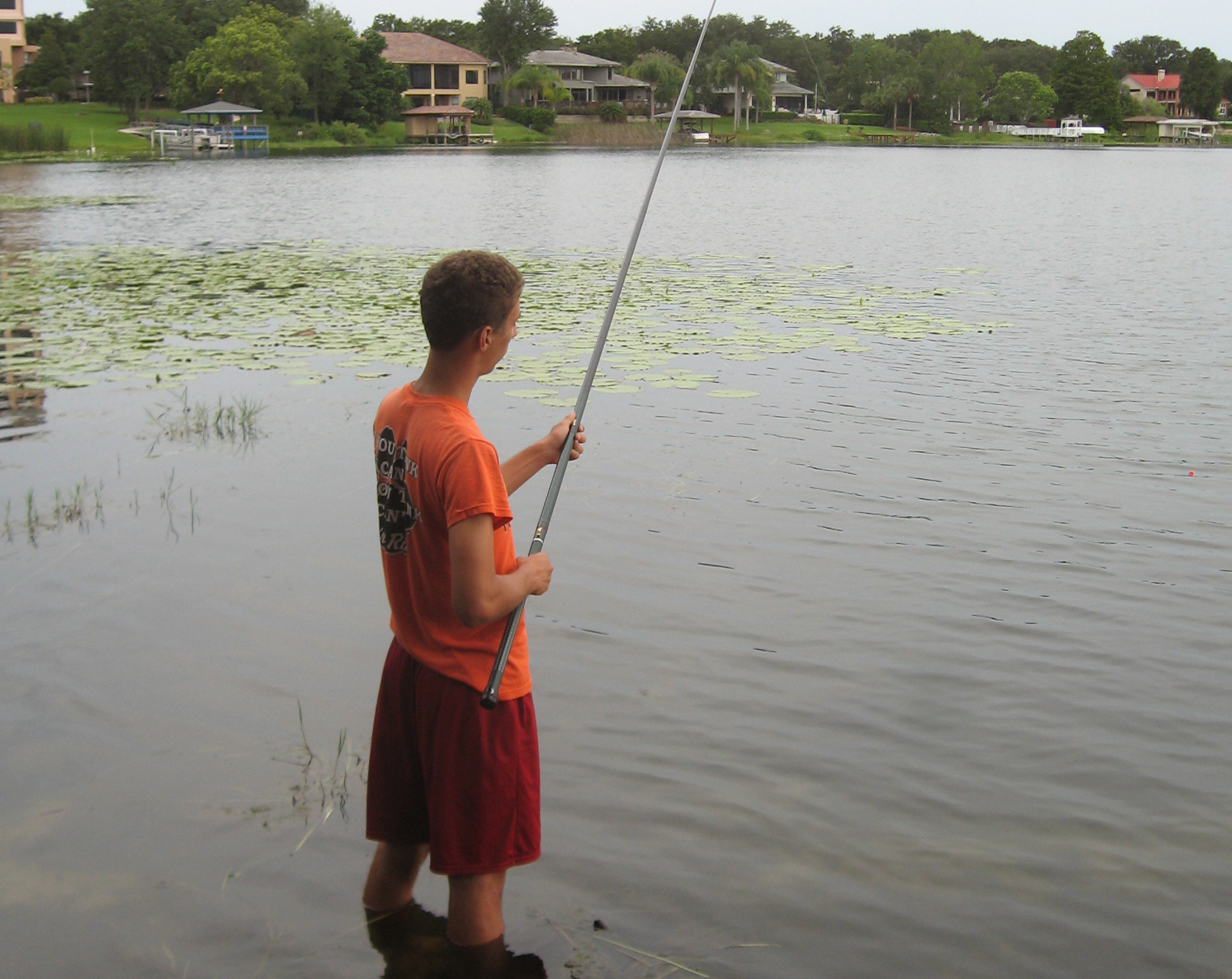January 19, 2016
By Tom Levine
A contemporary argument for the cane pole.
 For dropping jigs and minnows in shoreline crappie cover, a cane pole makes perfect sense. Hit a spot, move, hit another.
For dropping jigs and minnows in shoreline crappie cover, a cane pole makes perfect sense. Hit a spot, move, hit another.
If you think cane pole has lost the technology race to modern rods and reels, you're right. But cane poles have naturally evolved into plastic, fiberglass and other materials. It is no longer necessary to own a long car with at least one window that goes down to transport your pole. These days they come in a variety of convenient sizes: telescopic and multi- pieces. In other words, easy to keep in the car, boat or for a cool look, your hip pocket. With no reel they occupy practically zero space and weigh less than an opinion. And here's the best part: Nothing ever goes wrong with them!
Besides that, sometimes it's just fun to shed the gadgets and drift back to basics. Relax. Kick your shoes off. Set a spell and harken back to a simpler time.
Cane Pole Advantages: Suddenly your rod is 14 to 20 feet long. Tempting as it may be to sit with cane pole on the bank waiting for something to happen, you also may wish to walk with it as you would your mechanical spinning outfit, exploiting new opportunities along the way. Cane poles cast reasonably far. Combine 18 feet of rod with 20 feet of line and you've got a 38-eight foot radius. Concentrate on it.
It's fun, too. In double-blind tests placing a cane pole next to a barrel of monkeys (the time-honored human standard for high hilarity), the cane pole has proven to be more fun. Imagine how exciting when you get that strike from a huge bass. You haul up on the cane pole and your adversary in her turn hauls it right back down. No drag, you are engaged in the battle men fought before machinery stepped into the breach.
Rigging Up: Cane poles should be two to three and a half times as tall as Dolly Parton. Picture this as you make your selection, then refine your search and choose one that feels right for you.
Eight- to 10-pound test should do, considering the pole's shock absorption. Might seem obvious, but tie the line to the narrow end of the pole. If you wish, wrap line back six inches in case tip breaks off under strain from a giant catfish (but still tie off at end). Extend line 1 to 1 ½ feet below the butt for added range. Then start fishin' and hold on!
Jigger Poling: This is a specific style of cane poling designed to excise most of the fun and relaxation and replace it with a heart attack. It's done with a stout Calcutta pole with two feet of heavy line dangling from it. Cruise along parallel to shore laying down your red and white feather and slapping the water with the pole. After that it all happens pretty fast.
Tenkara Poles: This is a rage sweeping through fly fishermen and costing them hundreds of dollars. It is a really long pole with a fly line tied to the end. Guess what that is. A cane pole!
Speck Fishing: Drifting around trying to find some of those elusive delicacies provides the ideal opportunity to marry rod and reel to cane pole. As you bounce jigs on the bottom, spread out a few cane poles with small bobbers set for various depths. From these dangle live Missouri minnows (available at tackle shops) or a small tube lure on 1/16-ounce head. To rig cane pole for specks, use 6-pound test about the length of the pole. If minnows are your chosen bait, tie on a small wire or gold hook (about size 8). Narrow diameter of hook is the key to hooking bait in mouth without damage; the light weight key to minnow swimming well. Jig dangled below bobber also produces bites. You don't even have to jiggle it. Chartreuse is a common favorite but I never saw a color a speck didn't like.
From shore, walk around lake or river dropping by lily pads, brush or dock pilings.
Bream Fishing: Smaller hook (about size 10), bobber or not, bread balls, bacon or worms.
Types and Uses: For speck fishing from a boat, your standard one-piece bamboo is fine. Just leave it in the boat. For travelling in your car or backpacking, a several-piece bamboo rod with metal ferrules is available for around eleven dollars. Shakespeare offers their Wonderpole, a nice multi-piece, graphite composite telescopic outfit in sizes from 10 to 20 feet long, costing about a dollar a foot. Department stores sell one-piece telescopic poles already rigged for ten dollars. FS
First published Florida Sportsman March 2014
